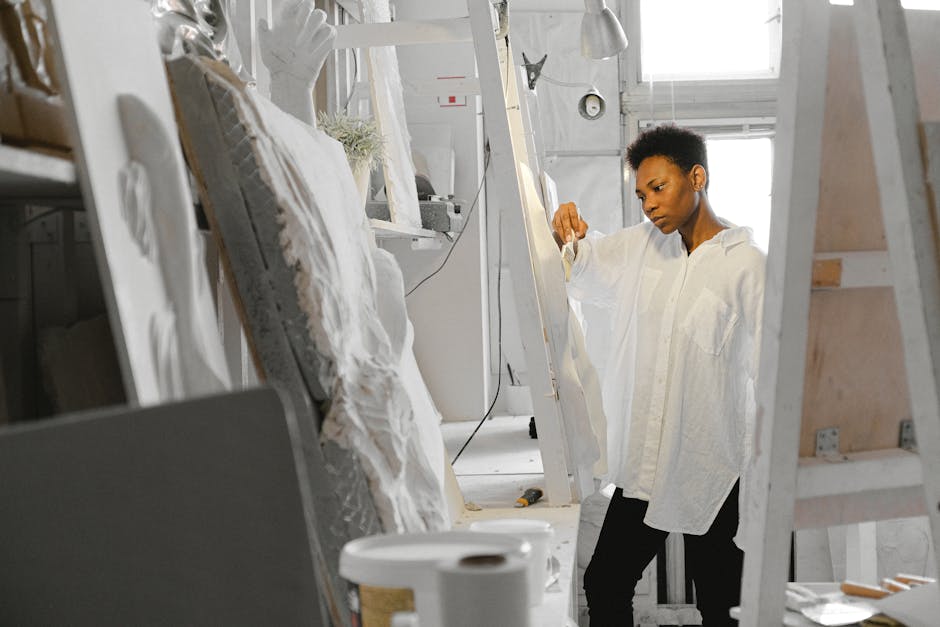No products in the cart.
Beyond the Canvas: Unlocking Creative Careers After a BFA
Discover vibrant career paths for BFA graduates, from commercial art to teaching. Explore essential skills and strategies to thrive.
Brooklyn, New York — For many artists, a Bachelor of Fine Arts (BFA) degree is just the beginning of a multifaceted journey. The path ahead is as varied as the colors on an artist’s palette, filled with opportunities that span commercial art, illustration, animation, gallery practices, and beyond. Yet, navigating these post-BFA waters can feel daunting. How does one transform passion into a sustainable career?
With the right strategies, emerging artists can not only survive but thrive in today’s competitive landscape. Portfolio building, understanding market trends, and monetization are key ingredients to a successful launch into the professional world.

Upon graduation, many BFA holders find themselves at a crossroads. Should they pursue a traditional gallery route, dive into freelance marketplaces, or perhaps, embrace teaching? According to the National Endowment for the Arts, nearly 60% of artists are self-employed, highlighting the importance of entrepreneurial skills in this field. In a digital age where platforms like Etsy and Instagram can serve as launchpads, the opportunity to showcase and sell work is more accessible than ever.
Consider the journey of Mia Chen, a BFA graduate from the Rhode Island School of Design. Initially, she struggled to find her niche. But by harnessing the power of social media, she transformed her passion for painting into a thriving online business. “I started by posting my work on Instagram, and it snowballed from there,” she recalls. “I learned to engage with my audience, and that led to commissions and even gallery shows.” Mia’s story is not unique; many artists are leveraging digital tools to carve out their spaces in the art world.
“You want to create what you love, but you also need to pay the bills.” This tension is familiar to many in the field, necessitating a strategic approach to career development.
Yet, success doesn’t come without its challenges. The gig economy can be unpredictable, and the pressure to constantly produce can lead to burnout. Artists must balance the creative with the commercial, navigating trends without sacrificing their unique voices. “It’s a double-edged sword,” says Alex Ramirez, a freelance illustrator based in Los Angeles. “You want to create what you love, but you also need to pay the bills.” This tension is familiar to many in the field, necessitating a strategic approach to career development.
Building a robust portfolio is essential, serving as a visual résumé that showcases an artist’s range and style. Many experts recommend creating a diverse selection of pieces that not only highlight technical skills but also convey personal narratives. “Your portfolio should tell a story about who you are as an artist,” advises Laura Kim, a career coach for creatives. “It’s about making connections with your audience and industries you want to enter.”
Moreover, artists should consider exploring various avenues for monetization. Freelance work, teaching art classes, and participating in local markets are all viable paths. For those interested in gallery representation, understanding the business side of art is crucial. This includes knowing how to price work, negotiate contracts, and promote oneself effectively.
Incorporating technology into their practice can also open new doors. Online platforms like Skillshare and Udemy allow artists to teach courses, while marketplaces like Society6 and Redbubble enable them to sell prints and merchandise directly to consumers. As the digital landscape continues to evolve, staying informed about these tools can enhance an artist’s ability to monetize their work.
As the world of work shifts, so too do the expectations of artists. The rise of remote work has redefined traditional structures, allowing greater flexibility and opportunities for collaboration across borders. Artists are increasingly finding themselves part of global networks, where creativity knows no boundaries.
For those interested in gallery representation, understanding the business side of art is crucial.
Looking ahead, the future for BFA graduates is ripe with potential. With the right mindset and tools, artists can navigate a landscape that is increasingly supportive of innovative and diverse expressions. As technology continues to reshape the art world, those who embrace change and seek out new avenues for expression stand to benefit the most.
Ultimately, the journey from BFA to a fulfilling career is not just about finding a job; it’s about creating an identity as an artist. With a mix of passion, strategy, and adaptability, the canvas of opportunity is wide open.











